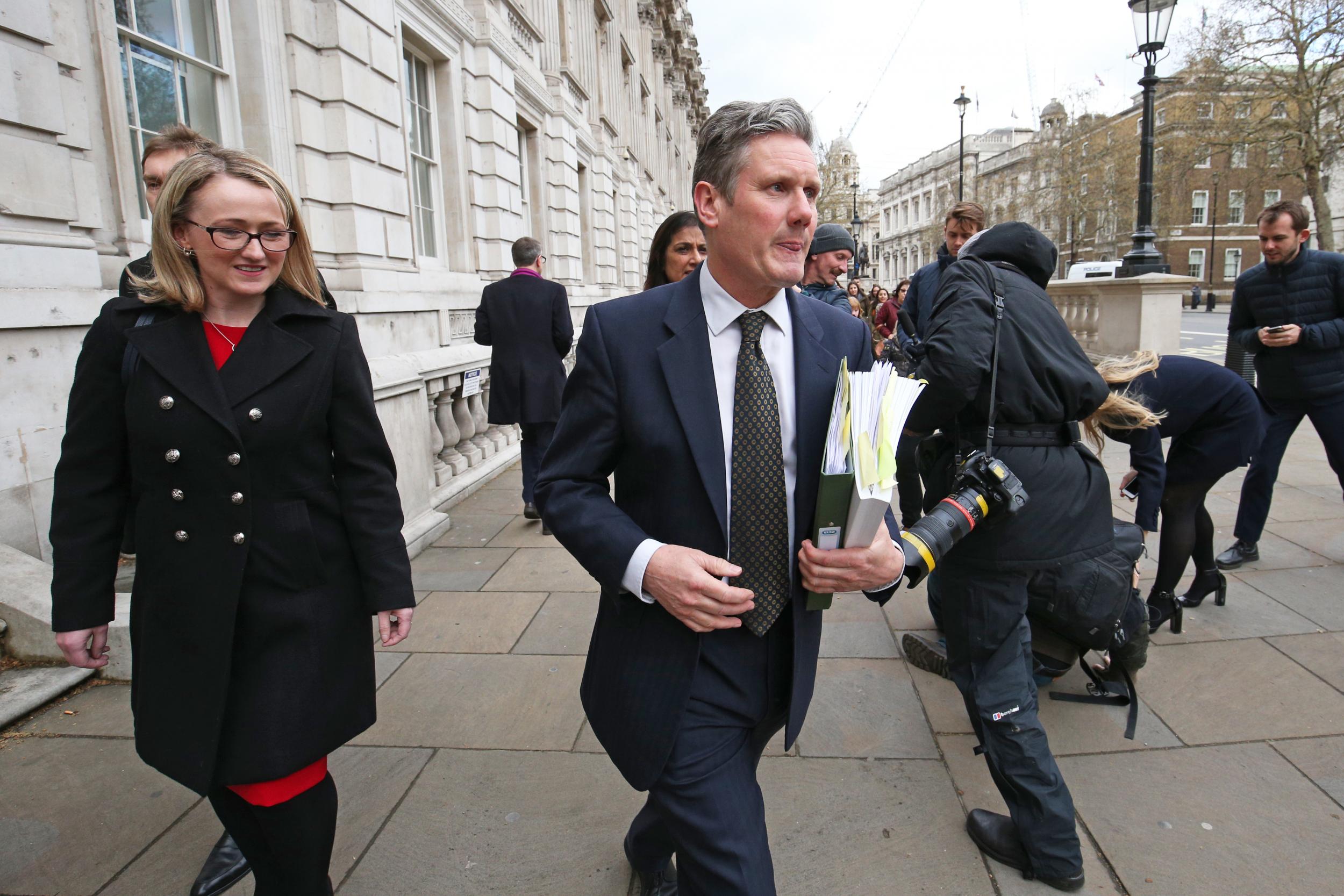How can Labour capitalise on Keir Starmer’s lead over Boris Johnson in the polls?
Former leaders have demonstrated how radical reforms can be completed within a parliamentary term, writes Sean O'Grady – but is Starmer ready for such a huge overhaul?


What are we to make of the impressive rise of Keir Starmer in the opinion polls? Does it mean Labour will win the next election? What could the Conservatives do to stop that happening?
The key to both questions lies in the interesting disparity between Starmer’s image and approval, and that of his party. Starmer has only been leader of the opposition since April, but in that period he has dramatically overtaken Boris Johnson by two key measures. First, the public perhaps now increasingly thinks he would make the better prime minister, albeit with tight margins – 34 per cent to 32 per cent in the latest YouGov survey.
Two polls have now indicated that, though plenty of recent ones also have Johnson in front. It is a slightly mixed picture.
Second, the public tend to approve of the way Starmer is doing his job much more than how the prime minister is doing his. Starmer has a net (approvals minus disapprovals) rating of +9 per cent; for Johnson the latest number is zero. The figures tend to bounce around and Johnson displays a “Marmite” tendency – large approvals balanced by large disapproval. Nonetheless the trend is clear – this time last year when Jeremy Corbyn was Labour leader, he had a net approval rating of -40 per cent, with Johnson on +6. By the time of the general election campaign 23 per cent of the public thought Corbyn would be the best premier, compared to 43 per cent choosing Johnson. It could be argued that much of the poor showing for Corbyn was due to grotesque reporting in the press, or to his views, but the stats are clear.
Yet the Labour Party still remains stubbornly behind in the opinion polls, barely higher than it was at the last election, one of its worst electoral performances since it started contesting elections in earnest a century ago.
The conundrum is easily solved. Leaving aside the merits of the case for a moment, Labour’s economic competence, its far-reaching policies, the arguments about antisemitism and splits and divisions (left/right and over Brexit) did it much harm in the election; and have left a toxic residue among the electorate.

The challenge for Starmer is to rebuild the image and substance of his party to something the electorate find more palatable. Sacking people, most notably Rebecca Long-Bailey, is one signal of reform, as are the moves to end the antisemitism scandals. Much more has to be undertaken by Starmer, his deputy Angela Rayner, and shadow chancellor Anneliese Dodds on the policy package, even if they decide to “travel light” as they approach the next election. The areas they will need to convince people about are obvious: policies on tax and public spending; schools and hospitals; migration; and attitudes to the EU, presumably not including cancelling Brexit.
After a decade in opposition, Labour’s frontbench is also relatively unknown to the public. This may be counted a positive in some ways, the “fresh skins” have less to live down, but it also means they’ve more work to do in punching through media indifference. With the exceptions of Starmer himself, only Rayner and Ed Miliband have much recognition, with David Lammy, Emily Thornberry, Jess Phillips and Jon Ashworth having some profile. It means Starmer has to do much of the heavy lifting, and the public haven’t had much chance to be impressed by the rest of the team. This is particularly true of comparisons between Rishi Sunak and Anneleise Dodds. Otherwise the saving grace for Labour is that so much of the cabinet is either bland, unknown, despised or, paradoxically in the case if Robert Jenrick, all three.
Time is, probably, on the Conservatives’ side. Despite the challenges, the party’s opinion poll lead remains, and changes to constituency boundaries and to voting registration will add to their advantage in Commons seats. By 2024, say, at least the worst of Brexit and Covid will have passed. Johnson will have the opportunity to launch new initiatives and promote some talent. Or the party could replace him with Sunak for an instant boost to the government’s credibility if not its campaigning energy.
Yet they could also stick with Johnson. Usually unpopular leaders drag their party down, but not invariably. Margaret Thatcher, when leader of the opposition for example, always lagged behind the then PM, James Callaghan, but that didn’t stop her party beating his. Clement Attlee did the same to the heroic figure of Winston Churchill after the war in 1945. And, in a more modest way, to be fair to him, Theresa May’s commanding leads over Corbyn in 2017 didn’t stop him depriving her of her majority.
But such twists are exceptional, and the usual story about leadership isn’t about personalities so much as about where any particular leader chooses to take their party, and how willing the party is to be taken there. If leaders take their party to unpopular places they will all become losers, but also vice versa. After four defeats in a row the Labour Party between 1992 and 1997, under John Smith and Tony Blair, demonstrated how radical reforms can be completed and party politics transformed within the term of a parliament, albeit with some help from a divided and incompetent Conservative administration. For Labour people, that must be a beguiling sort of inspiration. Are they ready to follow Starmer?
Join our commenting forum
Join thought-provoking conversations, follow other Independent readers and see their replies
Comments